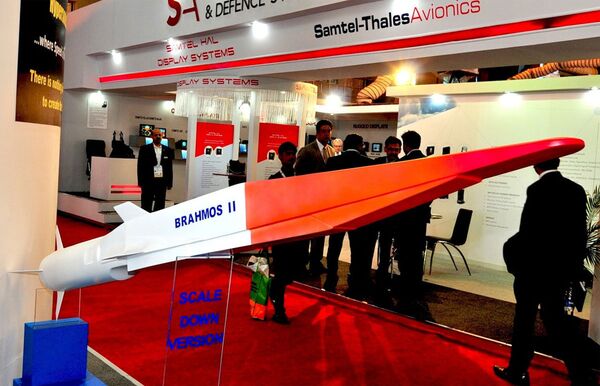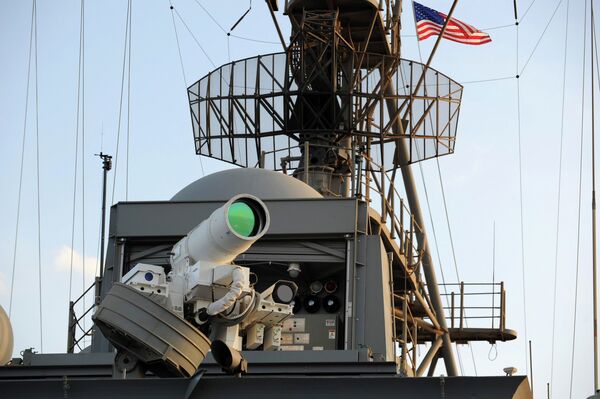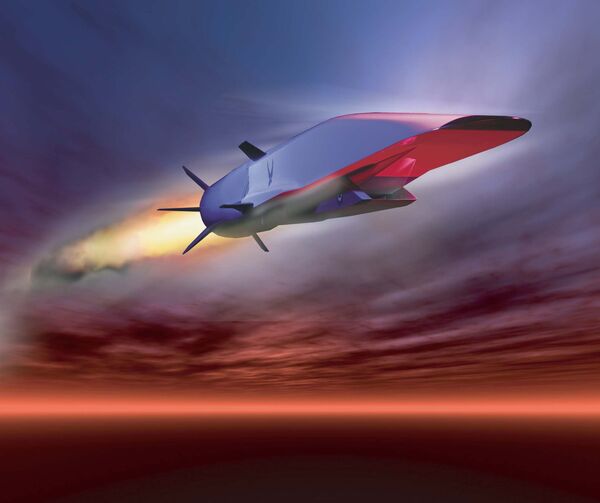The weapon is expected to reach a speed of 5-6 Mach, or 7,000-8,000 kilometers per hour.
It will be mounted on Russia's newest fifth-generation Husky-class nuclear submarines, which are currently under development and are due to be completed by 2025.
Hypersonic Weapons
Hypersonic aerial vehicles, such as planes, missiles, drones and spacecraft, operate on the same principles as the supersonic ones, but they have a number of significant differences which allow them to reach high speeds, including solid fuel and ramjet engines.
During an April 2017 trial, the Zircon missile flew at eight times the speed of sound, which makes it absolutely impervious to currently-existing missile defense systems.
According to unconfirmed reports, the Zircon is a modified version of the BrahMos supersonic anti-ship cruise missile – a joint Russian-Indian design based on the P-800 Onyx missile. Therefore, the Zircon could have an effective range of about 400 kilometers.
Experts said that the X-51A Waverider hypersonic cruise missile currently being tested in the US pales in comparison with the Zircon.

During an August 2014 test in Alaska, an X-43A was able to reach a top speed of 6,500 kilometers an hour (4,038 miles an hour) before burning up in the atmosphere seven minutes into the flight.
Russia's Zircon 3M22 has seen no such mishaps since testing began in 2016.
Last year, the Pentagon reported that between 2014 and 2016, US intelligence tracked seven test launches of the Chinese hypersonic aircraft DF-ZF, which reportedly reached a speed of about 6,000 kilometers per hour.
Railgun
Another promising sector to feature weapons of the future is the development of so-called railguns.
Last year, a team of Russian scientists successfully tested the country's first railgun, which relies on electromagnetic forces rather than explosives or propellant. During the latest test, a 15 gram plastic cylinder fired by the railgun went through an aluminum plate several centimeters thick.
Railguns are powered by electromagnetic conductors instead of gunpowder or explosives, allowing them to inflict major damage.
During a recent test in Shatura, Russia, the railgun fired a projectile at a speed of 3 kilometers per second, which is about half of what booster rockets need to overcome gravity and reach Earth’s orbit.
Since the latter half of the 20th century, many developed countries have been working on a new type of multi-mission electromagnetic railgun weapon capable of detecting, tracking and engaging ballistic missiles and air and watercraft threats.
THE FUTURE WEAPON: NEW US ARMY RAILGUN CAN DESTROY TARGETS 125 MILES AWA… https://t.co/zxGAvcSt29 via @YouTube
— Robert Young (@reysr4) 26 марта 2017 г.
The US Navy is pushing ahead with the development of its own super-powerful electromagnetic railgun to fire rounds at speeds up to Mach 7.5, which at 9,100 kilometers per hour, is more than seven times the speed of sound, and covers a distance of about 400 kilometers.
The US Navy's command is considering installing railguns on Zumwalt-class destroyers by 2020.
USS Zumwalt, the US Navy’s largest stealthy destroyer, after weapon testing of Railgun and laser weapons,… — https://t.co/2Idz7qXSg0 pic.twitter.com/edtV5bIReA
— Rajesh (@idstch) 17 марта 2017 г.
The problem with the US design, however, is that it requires a tremendous amount of power to operate – over 25 megawatts per shot. Another problem here is that the longer the distance to the target, the weaker the impact of this shot as air resistance keeps slowing the projectile down as it travels to its target.
Laser Weapons
In August 2016, Deputy Defense Minister Yuri Borisov said that laser weapons are no longer a novelty for the Russian Armed Forces and that the military is already in the process of commissioning and even adopting several types of laser-based weapons systems. He declined to elaborate.
It was in the Soviet Union that introduced the only operating model of hand-held laser weapons. It was a non-lethal beam radiation gun, designed for arming cosmonauts working at orbital stations.

In late 2014, Bloomberg reported that US Navy ships in the Persian Gulf had been equipped with laser weaponry onboard capable of destroying small targets, including small drones and RPG weapons, and the engines of inflatable dinghies.
The Laser Weapon System is believed to generate about 30 kilowatts of energy for its laser beam, with the Navy spending about $40 million on the R&D and testing of the system.
The most famous project, embodied in metal, was the American experimental aircraft Boeing YAL-1, which had a chemical oxygen iodine laser on board, which was launched in 2002.
The YAL-1 with a low-power laser was test-fired in flight at an airborne target in 2007. A high-energy laser was used to intercept a test target in January 2010 and the following month, successfully destroyed two test missiles.
The project was closed in 2011 after the Pentagon deemed it too expensive and focused on improving the Aegis missile defense system and the Standard interceptors. Nevertheless, the US military continues to work on a number of promising laser projects.
By the way, it was in the Soviet Union where the only operating model of hand-held laser weapons was created. It was a non-lethal beam radiation gun, designed for arming cosmonauts working at orbital stations.
Microwave Cannon
Since the late 1990s, US scientists have worked hard to create weapons that could deprive enemy soldiers of the ability to fight without causing them special harm.
As a result, the so-called Active Denial System (ADS) was created: a non-lethal, directed-energy weapon designed for area denial, perimeter security and crowd control.
In fact, this is a powerful microwave gun emitting electromagnetic waves in the millimeter wave range with a frequency of about 94 GHz, which have a short-term shock effect on people. The US military, in turn, with gloomy irony called it "the goodbye effect."
Active Denial System (ADS): US-based Weapon that can Defeat an Entire Army without killing a https://t.co/7CNEt6uXdT #military #usmilitary
— Military Stuff (@milstuf) 6 июня 2017 г.
The ADS was deployed in 2010 with the United States military in the Afghanistan War, but was withdrawn without seeing combat.
Right now, the ADS is only a vehicle-mounted weapon, with US Marines and police working on portable versions. The Pentagon, for its part, does not rule out the possibility of installing more a powerful ADS on the AC-130 aircraft artillery battery for the non-lethal "bombing" of enemy soldiers.








